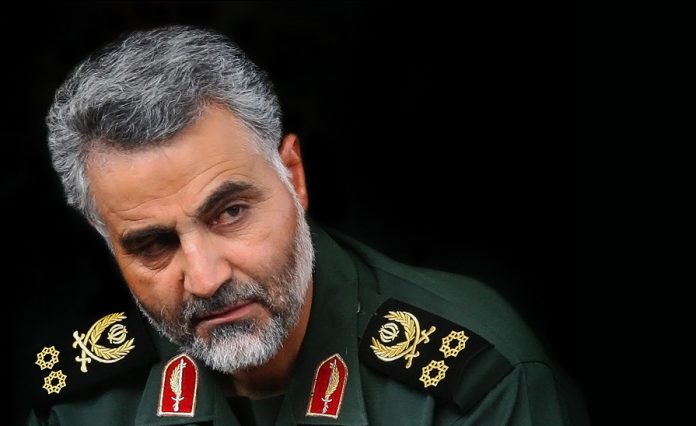Throughout the past week, tensions were tightened between the U.S. and Iran. The two have been pushing the each other which has made a diplomatic solution impossible. Action and reactions by both have pushed the world to the brink of war. Despite the tamping down of tensions, there nevertheless a tug-of-war between the two that shows no signs of stopping. The strike against Soleimani as well as Iran’s attack on the U.S. bases in Iraq has nevertheless sent signals of the path to war taken by previous presidents.
In discussions about Iran, it is easy to draw parallels between Iran and Vietnam. There are many ways the war in Vietnam diverge from present day warfare in the Middle East this includes; the nature of warfare, terrain, parties involved, arms and ammunition. However, it nevertheless resonates Washington’s dichotomy; the ease to march towards war as well as the reticence of war.
Promises to Keep: The Rhetoric of War
In keeping a campaign promise, presidents often commit the fallacy of committing the U.S. (intentionally or otherwise) to a position that leads them into war. The Trump administration like his predecessor President Obama, has promised that he would go to any lengths to prevent Iran from developing a nuclear weapon. The rhetoric seems to suggest that the president could be willing to attack Iran directly or otherwise to prevent a nuclear Tehran. Though the issue of a nuclear Iran was settled (to a large extent) with the JCPOA. The withdrawal brought Washington back to square one, together with worsening of relations between the two.
The current U.S.-Iran position resonates the experiences in Vietnam. President Johnson like his predecessors “promised” Americans as well as the world a non-communist Southeast Asia. For the U.S., this eventually meant widening its role in Vietnam. This took the form of the continuous bombing of North Vietnam and later the use of ground troops.
The U.S. at this point has projected an heir of confidence in winning the conflict against Iran. However, looks can be deceptive. This could be a hasty assumption as Iran’s position in the region has been embolden by the removal of Saddam and presence of Assad. The meticulous conduct of proxy wars, the missile program etc display its standing in the region. The president’s posturing vis-a-vis the strike resonates Washington’s false posturing prior to the Tete offensive (January 1968). In Vietnam, prior to the attack, Washington boasted about winning the war and notions of the “light at the end of the tunnel” were reiterated. This came to a crushing halt with Tete. Though the U.S. inflicted far more damage on Vietnam, the image of Americans being killed in the street nevertheless framed the context. This resonates with the impending crisis of today, the Iran backed militias continue to attack U.S. allies and conduct “terrorist” activities.
The Smoking Gun: The Lie That Could Lead to War
In August 1964, the the US destroyers – the USS Maddox and USS Turner Joy were allegedly fired upon by North Vietnamese PT boats. This attack spurred the U.S. Congress to pass the Gulf of Tonkin Resolution commonly called “grandma’s night shirt” as it covered everything. This was the immediate cause for the beginning of the war against Vietnam. The attack provided the U.S. opportunity to escalate its position in Vietnam. The lies and misinformation propelled down the path to war.
The nebulous beginning at Vietnam are not lost on the current scenario with Iran. Recently, the Tump administration has launched a strike against Iran by killing General Qassem Soleimani. The administration citied the need to prevent an “imminent attack” against the U.S. embassies and protection of regional interests. The president’s actions seem convoluted as members of congress as well as Secretary Esper, Secretary of Defense were not privy to information regarding an “imminent attack” on U.S. embassies in Bagdad as well as four other embassies.
The incident with Iran differs from Vietnam in terms of domestic support. Unlike the carte blanche granted to LBJ, Trump faces a road block with a divided and heavily partisan Congress. The Democrats have condemned the president’s actions as well as passed a resolution in the House that prohibits Trump to go to war with Iran without congressional authorization.
The Path of Least Resistance and Escalation By Choice
The current administration has on the one hand escalated the crisis with Iran but simultaneously backed down from all out warfare. This dichotomous strategy was on display in Vietnam. Trump seems to mirror LBJ’s “path of least resistance”.
Under Eisenhower, Kennedy, Johnson and Nixon, Washington gradually escalated the conflict in Vietnam. This was seen from the placement of U.S. advisors to operation ‘rolling thunder’ and finally to the introduction of ground troops. In an effort to avoid an outward war, the U.S. conducted raids, skirmishes, as well as aerial bombing of north Vietnam.
The Revolution of 1979 and later the hostage crisis set the two sides towards an impending crisis. During the presidencies from Carter to George W. Bush, the U.S. and Iran through their proxies in the region conducted attacks on each other. Under Trump, tensions have escalated with U.S. withdrawal from the JCPOA, imposition of additional sanctions as well attempts to cut Tehran’s oil exports. The U.S. escalation in the region was further seen through the lens of American military support of regional allies against Tehran.
Currently, the two sides have backed away from further action, however, whether this break in the rivalry will be long-lasting is doubtful. Though the nature of the conflict differs vastly, the eerie signals of the path to war are nevertheless transparent.
Image: sayyed shahab-o- din vajedi [CC BY]
The views and opinions expressed in this article are those of the author and do not necessarily reflect the official policy or position of The Geopolitics.
The author has recently submitted her PhD thesis to the Centre for Canadian, US &Latin American Studies, JNU, New Delhi. She was a Fulbright-Nehru Scholar 2017-2018 at the American University Washington D.C.


